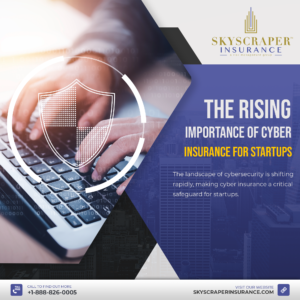Most judges don’t agree with claims of breach of contract in class actions seeking refunds for college tuition and fees tied to the pandemic.
Most students suing for refunds for tuition and fees paid after the abrupt closure of their colleges and universities during the first COVID-19 lockdowns have cleared their first hurdles, with judges in more than a half-dozen cases allowing claims to go forward.
About 200 class actions hit the courts soon after campuses closed this spring, most asserting breach of contract and unjust enrichment on behalf of various classes of students seeking refunds for tuition, fees, and housing and meal costs. Judges in Michigan, Ohio and Florida have allowed some of those claims to survive, despite assertions from the schools that students have not identified a contract or proven that, once in a virtual setting, they had breached it.
“This case is novel in the sense that there is no legal precedent involving a pandemic’s impact on a school’s promise to provide in-person learning when doing so would be unsafe and/or against government mandates,” wrote Judge James Moody of the U.S. District Court for the Middle District of Florida, on Sept. 16 in a case against Florida Southern College. “And so, like the ripple in a pond after one throws a stone, the legal system is now feeling COVID-19’s havoc with the current wave of class-action lawsuits that seek tuition reimbursement related to forced online tutelage.”
The first case rulings
Moody was one of the first federal judges to rule on whether to allow such claims, but state court judges in Michigan, Ohio and Indiana rejected dismissal of cases against several schools, including the University of Michigan, the University of Toledo, Ohio State University and Kent State University.
Some judges have dismissed cases, however, such as those against Eastern Michigan University and Lake Superior State University in Michigan, although some of them cited procedural reasons.
The rulings come as many colleges and universities have returned from summer breaks and had to weigh whether to reopen on campus or online. In preparation for the fall semester, many have changed their contracts to address COVID-19’s potential impact, while others have sought legislative protections from liability.
Many schools have a “strong incentive” to make things right with their customers, and that includes quietly resolving lawsuits, said Peter Lake, a professor at Stetson University College of Law in Gulfport, Florida. Some plaintiffs’ attorneys have voluntarily dismissed their cases, including those against the University of North Carolina, Duke, Purdue, the University of Florida and Pennsylvania State University.
Schools face a different environment in court than they did a decade ago, Lake said, as many judges have increasingly gotten involved in the affairs of academic institutions.
“I would have told you 15 years ago these claims have no chance, but today I can’t be that predictive—you may see some judges who think, well, promises were made and representations made, there’s some contract,” he said. “My guess is somewhere, someplace, some judges are going to evolve claims against institutions in ways that wouldn’t have been obvious 10 to 15 years ago.”
In court, many schools have pending dismissal motions, which plaintiffs attorneys have opposed. Both sides have cited the latest rulings, including in cases against Columbia University, Drexel University and Brown University. Steve Berman, of Hagens Berman Sobol Shapiro, whose firm has filed the case against Brown and many others, said he was “confident” other cases would survive dismissal.
“The main thread is that the courts are rejecting the educational malpractice arguments and finding that breach of contract claims may proceed to discovery,” he wrote in an email. “Educational malpractice,” which targets the quality of one’s education, is not usually a cause of action that plaintiffs assert in lawsuits, Lake said. Defendants, seeking to dismiss other claims, often insist plaintiffs are bringing “educational malpractice” in disguise, Lake said. Other judges have disagreed.
“Plaintiff’s complaint does not merely assert that the education she received was substandard due to the clinic being closed,” wrote Ohio Court of Claims Judge Patrick McGrath in an Aug. 24 ruling in the case against Ohio State University, which charged the plaintiff a fee that supported the dental clinic on campus. “The mere mention of possible consequences to the plaintiff’s educational or professional future does not render the plaintiff’s well-pleaded unjust enrichment claim a claim for educational malpractice.”
Court rulings in similar cases
On Sept. 28, McGrath issued a similar ruling in the case against Kent State.
Many judges grappled over whether a contract exists.
“Because there’s no written, explicit contract, what the exact terms of that relationship are is not super clear,” said Lynn Daggett, of Gonzaga Law School in Spokane, Washington. That said, schools have agreements with students to pay tuition in exchange for educational services, and there are marketing materials and policies that outline what students can expect for what they paid. One school might advertise small classrooms with personal instruction while another offers online classes, Daggett said.
“There’s always a contract,” she said. “We’re just fighting about what the contract actually looks like in each school.”
Lake said universities have a host of specific contractual relationships, such as fees for professional clinics or meal plans for campus dining, many of which judges have recognized in the COVID-19 cases.
In a July 27 ruling rejecting summary disposition, Michigan Court of Claims Judge Michael Kelly disagreed with the University of Michigan that there was no contract with students. The school pointed out that handbooks or other informational materials did not create a contract, but the plaintiffs had attached housing contracts and meal plan contracts that the judge found were “binding agreements.”
Michigan Court of Claims Judge Cynthia Diane Stephens on Sept. 15 cited Kelly’s ruling in refusing to dismiss claims for breach of contract in a “strikingly similar” case against Western Michigan University.
Kelly, however, dismissed cases against Lake Superior State University and Eastern Michigan University after turning to the language of the tuition agreements, which made no promises of in-person education.
“Here, plaintiff registered for classes and received services, as alleged in the complaint,” he wrote in a Sept. 24 ruling in the Eastern Michigan case. “There is no room in this unambiguous agreement to find that plaintiff’s obligation to pay tuition was predicated on receiving a certain method of instruction, or that live, in-person instruction was ever promised to plaintiff. The court must enforce the parties’ agreement as it has been written and it may not add additional terms to the agreement.”
Without specific contracts, some judges have focused on university publications and catalogs. In the case against Florida Southern, for example, the college argued that no contract provided “in-person educational services,” but Moody found that the school’s publications “clearly implied the courses would be conducted in-person.”
“The college’s materials also touted its many resources and facilities – all of which were located on the campus thereby implying in-person participation,” he wrote.
Other judges have found that those materials do not constitute a contract. On Oct. 1, Michigan Court of Claims Judge Christopher Murray dismissed claims for breach of contract in cases against Michigan State University and Ferris State University, concluding that no such contract for in-person instruction existed, but allowed most of the unjust enrichment claims to go forward.
Defendants have raised other challenges, such as immunity and standing, which judges have yet to address. How the cases survive past motions to dismiss remains uncertain.
“I certainly feel for the students who want and expect one thing out of college and not, frankly, getting it,” Daggett said. “However, legally, I think the cases that stem from last spring, we were in an emergency and colleges did the best they could by switching to online and a judge would have a hard time saying that’s a breach of contract.”




